| |
September 2012
|
 |

1. Aerojet/AA create fellowship
Aerojet and AeroAstro have created a new fellowship which will, at least initially, focus on autonomous systems development. In a press release, Aerojet said that the fellowship "is intended to be just one aspect of Aerojet’s University Council Roadmap for a long-term relationship between MIT researchers and Aerojet scientists and engineers who will serve both institutions well into the future."
AeroAstro Department Head Jaime Peraire, who worked with Aerojet to create the fellowship, said that the fellowship will play a significant role in the department's research portfolio. “The graduate student fellowship sponsored by Aerojet will provide support for an exceptionally qualified student to conduct research in the area of aerospace autonomous systems,”he said. “We're delighted to work with Aerojet to advance state-of-the-art developments in this field.”
Professor Jon How will lead the research. He reports that Robert Grande, a new admit from Johns Hopkins University, will be the first Aerojet Fellow.
Aerojet is an aerospace and defense company that provides propulsion and energetics to the space, missile defense, strategic, tactical missile, and armaments areas in support of domestic and international markets. |

Steve Hall

Wes Harris

Chuck Oman
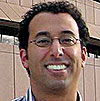
Youssef Marzouk
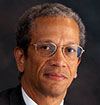
Dan Hastings
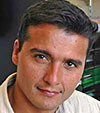
Paulo Lozano
|

2. Newsbriefs
Professor Steve Hall has been elected MIT Faculty Chair. Steve will serve as Chair-elect for the coming year, becoming Chair on July 1, 2013.
AeroAstro Professor and Associate Provost for Faculty Equity Wes Harris has been selected to receive the National Organization for the Professional Advancement of Black Chemists and Chemical Engineers' President's Award. The organization, which exists "to create an eminent cadre of people of color in science and technology," is recognizing Wes for his advocacy for underrepresented communities in science, technology, engineering, and mathematics, and his support of the NOBCChE presence at MIT.
The National Space Biomedical Institute has named Man Vehicle Lab director Dr. Charles Oman one of seven engineer and scientist team leaders in its efforts to protect astronaut health during long-duration spaceflight. Chuck will head NSBRI's Sensorimotor Adaptation Team.
Professor Youssef Marzouk was selected to take part in the National Academy of Engineering's 18th annual U.S. Frontiers of Engineering symposium. The 78 participants from industry, academia, and government, were nominated by fellow engineers or organizations and chosen from approximately 300 applicants.
Undergraduate Dean Daniel Hastings has been appointed the Green Education Professor of Aeronautics and Astronautics and Engineering Systems. Dan is one of only three recipients of the chair since its establishment in 1974. His selection was based on "his scholarship, service, national leadership in his field, as well as other contributions to the Institute."
AeroAstroers Dr. Sameera Ponda, Brandon Luders, and Professor Jon How received the AIAA Best Paper Award from the 2011 Guidance Navigation and Control Conference by the AIAA Guidance, Navigation and Control Technical Committee. The paper title is "Decentralized Information-Rich Planning and Hybrid Sensor Fusion for Uncertainty Reduction in Human-Robot Missions." The work was accomplished jointly with Eric Sample, Nisar Ahmed, and Professor Mark Campbell of Cornell.
Professor Paulo Lozano's work on microthrusters was featured in a July 30th Aviation Week cover story on small satellites.
AeroAstro alum Dr. Lucy Cohan and her former PhD advisor Professor Dave Miller are the recipients of the 2011 Rudolf Kingslake Medal and Prize. The medal is presented annually in recognition of the most noteworthy original paper to appear in the Society's official journal, Optical Engineering. SPIE is an international society advancing an interdisciplinary approach to the science and application of light.
PhD student Sung Wook Paek has won the Space Generation Advisory Council's Move an Asteroid 2012 Technical Paper Competition. The competition challenges students and young professionals worldwide to come up with original ideas relating to earth-threatening objects. His advisor, Professor Oli de Weck says "Sung Wook's idea was to essentially launch a cloud of paintballs towards (an earth-bound) asteroid, the change in color of the surface changes the emissivity/reflectivity, leading to different amount of solar impulse which, over time, can alter the trajectory." |
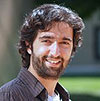
Sertak Karaman
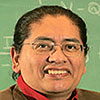
Carlos Castillo-Chavez
|

3. Welcome
Sertac Karaman is our new Charles Stark Draper Assistant Professor of Aeronautics and Astronautics. He received his BS from Istanbul Technical University, and his SM and PhD at MIT, from MechE and EECS, respectively. Sertac lists his interests as robotics, motion planning and control, verification and automated synthesis of embedded systems, autonomous vehicles, and robotic networks. He was recipient of the 2011 AIAA Orville and Wilbur Wright Graduate Award for exceptional aerospace research.
Jen Roy has joined MIT as the CDIO assistant, working for Ed Crawley and under Bill Litant's supervision. A MassArt alum and former employee, she's doing database work, web development, and other tasks for the international CDIO Initiative, which now includes more than 90 institutions throughout the world.
Carlos Castillo-Chavez, an Arizona State University professor, is the new Martin Luther King Visiting Professor in our department. Carlos is founding director of ASU's Mathematical, Computational, and Modeling Sciences Center and its Mathematical and Theoretical Biology Institute. While he's at MIT, Carlos will work closely with Professor Moe Win. |
|

4. LAE is department's new lab
AeroAstro's Partnership for AiR Transportation Noise and Emissions Reduction (PARTNER) lab has been renamed the Laboratory for Aviation and the Environment. PARTNER continues as an FAA Center of Excellence headquartered at the lab. The new lab's mission is to advance understanding aviation's environmental impacts and to develop mitigation approaches. Professor Steven Barrett is the LAE director and PARTNER associate director. Dean Ian Waitz continues as PARTNER director.
LAE-affiliated AeroAstro faculty are Steven Barrett, Hamsa Balakrishnan, John Hansman, Ian Waitz, and Karen Willcox. |

|

5. AA logo could outlive civilization
The MIT AeroAstro logo will be among among 100 images that may well outlive all other artifacts of our civilization, thanks to Professor Brian Wardle. Brian has worked with artist Trevor Paglen and EECS Professor Karl Berggren on a project that will put a time capsule into orbit around the earth, where it is expected to remain for hundreds of millions of years. Among 100 images embedded in the capsule is the department's iconic globe-and-aerospace-vehicle motif. The project effectively embeds a time capsule in space. The artifact is scheduled to launch this fall aboard the Echostar XVI communications satellite,
Brian, who worked on the specs for the artifact's material, says it is made of etched single-crystal silicon, and contains 100 images selected by the artist to pass on to whoever (or whatever!) finds it. The University of California Press has published a book telling the story of the project, which includes several pages written by Brian. |
|

6. MicroMAS review
Professor Kerri Cahoy writes: On July 30, the Space Systems Lab held the Critical Design Review A for the Microsized Microwave Atmospheric Satellite (MicroMAS). MicroMAS is a nanosatellite called a CubeSat that is roughly the size of a shoebox. It carries a passive microwave radiometer to take images of hurricanes and tropical storms. The project is a collaboration between SSL and Lincoln Laboratory. The MicroMAS CubeSat bus is being built
largely by students, the instrument is being built at Lincoln
Laboratory. Launch is planned for 2014.
MITers at the MicroMAS review were (front to back, left to right) Anne Marinan, Christian Valledor, Eric Peters, Anthony Souffrant, Greg Eslinger, David Miller, Kerri Cahoy, Brian Coffee, Ryan Kingsbury, Paul Bauer, Evan Wise, Luis Orrego, Clayton Crail and Hal Schmidt |
|

7. Flights and flaps
Professor John Hansman offers his Flight Measurement Laboratory (16.64) students the opportunity to participate in a flight test program that they design. This spring the students tested the effect of flap position on a Cessna 170's takeoff and landing performance.
16.64 participants (front, from left) Raul Rios, Ho Chit Siu, Sarah Ferguson, Professor John Hansman, (back, from left) grad student Tony Tao, Joshua Oreman, Cecily Joujon-Roche, Pearl Lipinski, and Sam Range at Plymouth Airport following a flight test. |
|

8. FPOPers discover aerospace
At the start of the new school year, Professors Karen Willcox and Jeff Hoffman, together with a team of AeroAstro students, hosted the department's first FPOP (Freshman Pre-Orientation Program) "Discover Aerospace" adventure. Thirty freshman participated in the four-day event, which included hands-on design and build activities, AeroAstro tours, a visit to the Museum of Science Hayden Planetarium (including a private tour by a Course 16 alum), and social events with AeroAstro students and faculty. Discover Aerospace culminated in the students launching water bottle rockets in a competition judged by Space-X representatives. The freshmen were tasked with designing and building a water rocket to achieve maximum time aloft, with a significant bonus for preserving the payload of one raw egg. Karen notes, “We saw many creative designs and even a few surviving eggs."
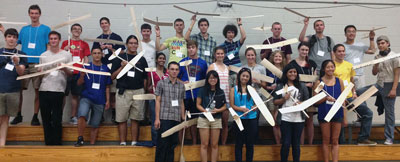 |
FPOP participants prepare to fly their gliders. |
.jpg)
|
FPOPers building water bottle rockets in the Gelb Lab. |
|
|

9. The defenders
Congratulations to our latest batch of doctoral thesis defenders:
- Josh Krakos, June 18: Unsteady Adjoint Analysis for Output Sensitivity and Mesh Adaptation
- Yunjian Xu, July 20: Efficiency Loss in Resource Allocation Games
- Taylor Matlock, August 15: An Exploration of Prominent Cusped-Field Thruster Phenomena: The Hollow Conical Plume and Anode Current Bifurcation
- Shannon Dong, August 16: Learning and Recognition of Hybrid Manipulation Tasks in Variable Environments using Probabilistic Flow Tubes
- Sameera Ponda, August 17: Robust Distributed Planning Strategies for Autonomous Multi-Agent Teams
- Nirav Shah, August 27: Influence Strategies for Systems of Systems
- Ioannis Simaiakis, August 27: Analysis, Modeling and Control of the Airport Departure Process
- Greg O'Neill, August 27: An Approach to Analyze Tradeoffs for Aerospace System Design and Operation
|

|

10. MIT images for download
Ever need a free stock photo of the MIT campus for a flyer, website, or other project? MIT's Communication Production Services (the department that includes CopyTech, Reference Publications, and some services of the now-defunct Publishing Service Bureau) has created a Flickr library of new and old MIT images for free use under the Creative Commons guidelines. We're working with them now to add a substantial AeroAstro image package to the collection. In addition, there are downloadable AeroAstro images available at http://aeroastro.mit.edu/videos-photos/image-gallery, a collection that will also soon be expanded. |
 
|

Follow AeroAstro
Don't wait for your enews and emails — keep up with AeroAstro news as it happens — follow the department on Twitter and Facebook. |
|
If you know of events, honors, activities, or other information you'd like to see in the next issue of AeroAstro enews, please send to wlitant@mit.edu — we'd be pleased to include your submissions. |
|
|

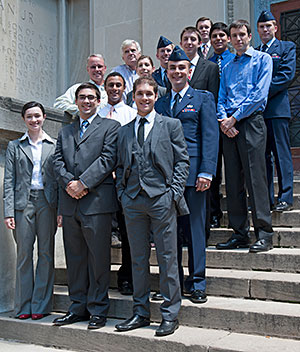
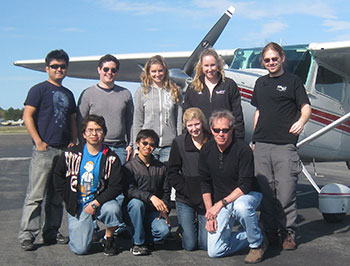










.jpg)
